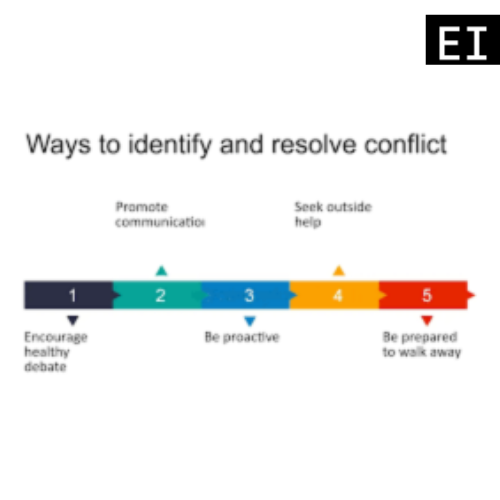In the dynamic and fast-paced world of startups, team conflicts are bound to arise. However, effectively managing and resolving conflicts is crucial for maintaining a positive and productive work environment. In this comprehensive guide, we will explore strategies, insights, and expert advice on how to manage and resolve team conflicts in a startup environment. From understanding the root causes of conflicts to implementing effective conflict resolution techniques, this article will provide you with actionable tips to foster healthy collaboration, enhance team dynamics, and drive success.
To effectively manage team conflicts, it is important to understand their underlying dynamics. Key points to consider include:
- Types of conflicts: Explore the different types of conflicts that can arise within a startup team, such as task-related conflicts, relationship conflicts, and communication conflicts.
- Common causes: Identify the common causes of conflicts, such as differences in goals, values, communication styles, and resource allocation.
- Impact on team dynamics: Understand how unresolved conflicts can negatively impact team dynamics, morale, productivity, and overall success.
- Signs of escalating conflicts: Recognize the signs of escalating conflicts, such as increased tension, lack of communication, and decreased collaboration.
Understanding the Dynamics of Team Conflicts “Conflict is inevitable, but combat is optional.” – Max Lucade
Promoting Open Communication and Active Listening
“Seek first to understand, then to be understood.” – Stephen R. Covey
Open communication and active listening are essential for managing team conflicts. Consider the following strategies:
- Establishing a safe space: Create an environment where team members feel comfortable expressing their opinions, concerns, and emotions without fear of judgment or retaliation.
- Encouraging dialogue: Promote open discussions and encourage team members to voice their perspectives and actively listen to others.
- Empathy and understanding: Foster empathy among team members, encouraging them to understand different viewpoints and consider alternative perspectives.
- Effective feedback mechanisms: Implement feedback mechanisms, such as regular check-ins or feedback sessions, to address issues in a constructive and timely manner.
Identifying and Addressing Root Causes of Conflicts
“Peace is not the absence of conflict, but the ability to cope with it.” – Mahatma Gandhi
To resolve team conflicts, it is crucial to identify and address their root causes. Consider the following approaches:
- Facilitating open discussions: Encourage team members to discuss the underlying issues causing the conflict and work towards finding common ground.
- Mediation and facilitation: Utilize mediation techniques or bring in a neutral facilitator to help guide the conflict resolution process and ensure a fair and unbiased approach.
- Addressing miscommunication: Address communication breakdowns and misunderstandings by promoting clarity, active listening, and open dialogue.
- Collaborative problem-solving: Encourage collaborative problem-solving techniques, such as brainstorming or consensus-building, to find mutually beneficial solutions.
Establishing Conflict Resolution Guidelines and Processes
“Effective conflict resolution requires thoughtful consideration, clear communication, and a commitment to finding a solution.” – Ken Blanchard
To effectively manage conflicts, establish conflict resolution guidelines and processes. Consider the following steps:
- Developing conflict resolution policies: Create clear guidelines and policies that outline the expected behaviors, procedures, and escalation processes when conflicts arise.
- Encouraging transparency: Promote transparency by ensuring that all team members are aware of the conflict resolution procedures and have access to necessary resources or support.
- Training and skill-building: Provide conflict resolution training to team members to equip them with the necessary skills and techniques to manage conflicts effectively.
- Regular follow-up and evaluation: Continuously evaluate the effectiveness of conflict resolution processes and seek feedback from team members to identify areas for improvement.
Conflict is an inherent part of team dynamics, but how it is managed and resolved can greatly impact the success of a startup. By understanding the dynamics of team conflicts, promoting open communication and active listening, addressing root causes, and establishing conflict resolution guidelines, you can create a positive and collaborative work environment. Remember, effective conflict management fosters healthy team relationships, enhances problem-solving capabilities, and ultimately drives the success of your startup.
Stay updated with the latest in the startup world through our Startup News and Funding Alert. Sections. Explore Founder Profiles, Startup Profile, Founders Interview, Success Stories. In-depth Insights articles, Resources, and How to. Follow us on Facebook, Twitter, Instagram and LinkedIn for regular updates.


